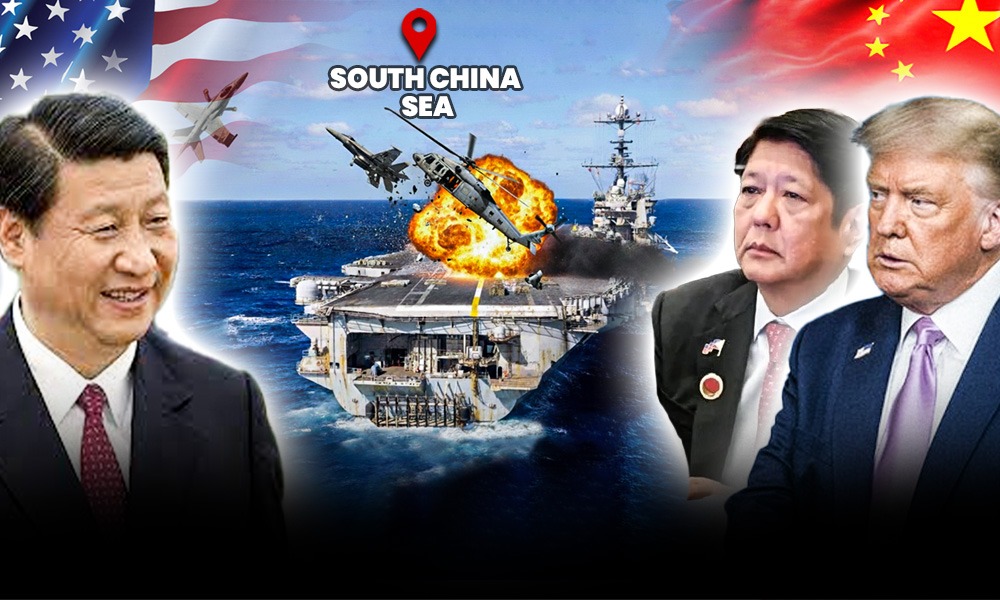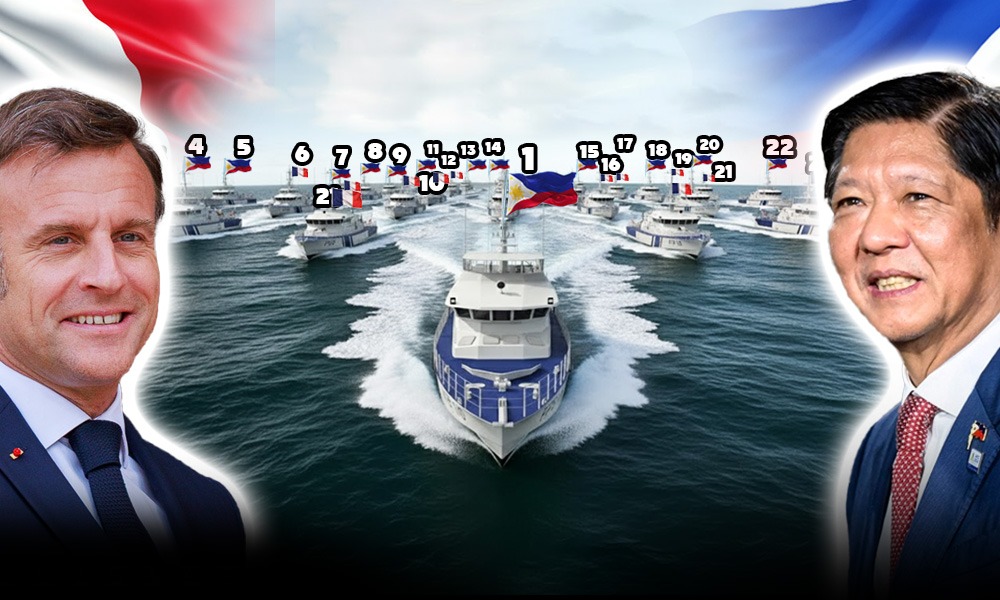In recent years, the Philippines has emerged as one of the fastest-growing economies in the world, impressively rivaling the dizzying growth rates of fellow Asian countries such as China.
Being a country mostly known for its chaotic political scene and hyper-critical media landscape, the Philippines is now in global news for all good reasons. For instance, the country overtook Malaysia and Vietnam to become Southeast Asia’s fastest-growing economy.
Here arises one very important question. While the whole world is busy with chaos and conflict, is the Philippines quietly focusing on becoming an economic superpower?
Is the Philippines on Its Way to Become an Economic Superpower?
Now, most of you might wonder – Isn’t the Philippines a developing nation that was far from becoming an economic superpower a few years ago?
Remember! We’re talking about potential here. And what makes us so certain is the history of the country itself.
In the past, the Philippines was one of the richest nations in Asia, only second to Japan. So, it’s more than a florid fantasy that the country might want to reclaim its position.
The period from 1965 to 1973 was the golden time for the Philippines GDP. Diosdado Macapagal, then President, liberalized the economy by removing import controls and devaluing the currency. The same policy has been continued by President Marcos, allowing money to flood in and positioning the country on the journey of economic hikes.
In the 1920s, the average wage in the Philippines was higher than a Japanese person’s wage. During the 1930s, it was pretty much the same. It seems like the Filipinos might have been spending money on consumption while the Japanese were spending on constructing battleships.
Even if you view the picture from the point of total income per capita, the gap was not very large. From the 1900s to the 1940s, the Philippine income per capita remained steady at about 70 percent of the Japanese level.
The Philippines has had a higher income per capita compared to most East and Southeast Asian countries, just behind Malaysia, Hong Kong, and Singapore.
When the Things Started Going South
Although there were good times, things started going downhill in the 1980s. The ex-President Carlos Garcia has promoted industrial growth through his Filipino First Policy. The policy spurred growth in the local industry by promoting Philippine-made electronics and equipment. It was a strategic move on his part to compensate for the expiration of the Laurel Langley Agreement.
The agreement allowed the countries to make their countries competitive and ready for world trade within 17 years. It would allow the country to export its stuff to other countries without U.S. approval.
Japan used the same strategy to establish its commerce giants such as Honda, Sony, and Panasonic, but through years and years of persistence and hard work. South Korea produced Samsung and L.G. Likewise, Taiwan had TMC and Acer. China also started its industrial growth with a similar strategy, and it took 30 years for it to become an industrial country. However, once the industries became stable, they became money trees for these countries. And these countries cashed on them.
Now you see, the problem with this policy was that it took too long to generate wealth. Besides, it requires political stability and consistent policies. But unfortunately, the Philippine elite were impatient and could not wait that long to become wealthy.
Why so?
If you look at their history, everything will make sense to you. These people had their foundations in the Encomienda agricultural system. It was a Spanish system. The system was governed by the experts of cash crops. Investments in such crops start paying you off within a few months. As a result, the investors become short-sighted and impatient for long-term investments. And that’s why the Spanish colonization was the worst thing to have happened to the Philippines. The British, on the other hand, were not agriculturists. So, they did not rely on cash crops. They invested in technology and equipment. Besides, countries like Japan, Singapore, Taiwan, and South Korea did not have land for agriculture. So, they had no other choice but to industrialize. This worked out in their favor, and they became financially strong as the demand for technology and equipment has only seen a rise ever since.
Lacking the far-sightedness, Macapagal sabotages Garcia’s policies. His devaluation policy began in 1962, making borrowing easy. It was a common tactic among kings from medieval Europe to get rich. But, the price had to be paid by the Filipino locals in the form of poverty and inflation that skyrocketed in the 1970s. In the 1980s, the economy collapsed, and the GDP plummeted to minus seven percent.
The Road to Change
From there, several political incidents and movements led to the road of change. The focus was shifted to improving the economy and the country’s global reputation, which had been subject to strain due to allegations of corruption, human rights abuses, and the manipulation of democratic processes.
The Filipino government started spending more on improving the infrastructure. Its primary beneficiaries were the tourism industry. The international image was improved by hosting several international events. The policy was strictly adhered to during the time when the whole world was experiencing the international debt crisis.
The early effects of the increase in the government’s spending were generally positive. The investors invested aggressively. As a result, the GDP began to see an improvement. The government also focused on an expert-led industrialization that attracted foreign investments.
But later, the country’s economy stagnated. In those times, the people had no choice but to move to other countries for their bread and butter. The dollars earned by them also helped the country’s economy significantly.
Since then, the country has made considerable policy changes and has continued to multiply militarily and economically. Not to forget that the Philippines experiences multiple earthquakes and typhoons, yet the country has continued to grow.
What’s the future like?
According to experts, the country can quickly restore its position as one of the wealthiest countries in Asia if it continues to grow at this pace. The economy of this country is a newly industrialized emerging market in the Indo-Pacific region. In 2023, it stood at 436 billion dollars, and by 2035, it is even expected to be a trillion-dollar economy.
From relying solely on agriculture to investing in manufacturing, the country has come a long way. With an average growth rate of six percent since 2010, the Philippines is one of the fastest-growing countries in the world.
Being a key player in the global export game, it exports a variety of products.
First up, we’ve got electronics and semiconductors. The Philippines is a powerhouse when it comes to producing integrated circuits, semiconductors, and electronic components that you probably use every day!
Next on the list is machinery and transport equipment. Think cars, aircraft, and ships – yep, the Philippines is in on that action too!
Now, let’s talk coconuts! The Philippines is famous for its coconut products like coconut oil, copra, and desiccated coconut. Who doesn’t love a bit of tropical goodness?
And speaking of tropical, we can’t forget about fruits and veggies! From bananas and pineapples to mangoes and papayas, the Philippines is shipping out all the tasty tropical treats.
But wait, there’s more! The Philippines also exports apparel and garments, wood products, minerals and metals like nickel and copper, and a whole array of delicious food and beverages.
Trade Partners
First up, we’ve got the United States. Yep, the Philippines and the U.S. are like two peas in a pod when it comes to trade. They’ve got a strong partnership, exchanging goods like electronics, machinery, and agricultural products.
Next on the list is Japan. This Asian powerhouse is a significant trading partner for the Philippines, particularly in the electronics and automotive industries. Talk about a match made in trade heaven!
Now, let’s talk about China. With its booming economy, China is a significant importer of Philippine goods like fruits, minerals, and seafood. It’s a win-win situation for both countries!
But wait, there’s more! The Philippines also has robust trade relationships with countries like Singapore, Hong Kong, Germany, and South Korea. These partnerships bring in a variety of products, from textiles to technology.
And let’s not forget about our neighbors in ASEAN – the Association of Southeast Asian Nations. Countries like Malaysia, Thailand, and Indonesia are key trading partners, fostering economic growth and regional cooperation.
Now you can see why the Philippines has been named one of the Tiger Club Economies, including Indonesia, Malaysia, Vietnam, and Thailand. By 2055, it is expected to become one of the largest economies in the world, surpassing most of the Asian countries.



